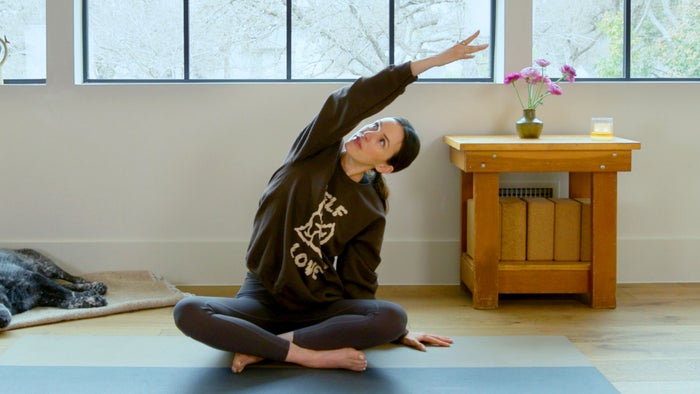Are You Spiraling on The Mat? You Should Be
Your practice will change with arm and leg spirals
Contrary to what the title suggests, I will not talk you down from the ledge. While yes, sometimes when you practice yoga your mind can get away from you and you start to spiral, this is not the type of spiraling that I’m going to address. That deserves its own post. This post is about your body’s physical spirals. When I first began practicing yoga, I studied Iyengar yoga, which is an alignment based practice. While practicing, the way your body is positioned in the poses is meant to help you become more aware of the here and now. One of the strengths of an Iyengar practice is its focus on the small things. I owe much of my alignment understanding to this practice (plus 30 years of practicing yoga in general).
One of my favorite concepts to investigate is the oppositional movement-related idea of spirals. These spirals create stability in the joints and the poses while helping you find more ease and less effort. Spirals refer to the oppositional internal and external rotation that happens in the arms and legs when practicing different poses, such as Downward Dog, Triangle pose, and so many others.
The fundamentals are as follows:
Spirals arm
The upper arm and lower arm spiral in opposite directions in poses with straight arms, such as Plank pose (Phalakasana), Warrior pose (Virabhadrasana 1), Downward Dog (Adho Mukha Svanasana), and Handstand (Adho Mukha Vrksasana). The upper arm rotates outward (external rotation of the humerus) and the forearm rotates inward (internal rotation of the radius, aka pronation). This action connects the arm into the back to give you more power and stability in the shoulder and elbow joints.
When you are on your hands and knees in Table pose/Bharmanasana, this movement is easiest to explore. Place your hips above your knees and your shoulders over your wrists. Spin your elbow creases forward so that the points of your elbows aim toward your thighs. When you do this, your lats and lower trapezius muscles may engage and your shoulder blades may naturally slide toward your waist (depression). Additionally, you might notice that your weight shifts toward your outer hands, which is bad for your wrists. Press the knuckles of your index and thumb fingers into the mat to counteract this. Internal rotation of the lower arm, palm stability, and elbow balance are all created by this action. Your upper arm spirals outward to connect the arm into the upper back. To ensure hand stability, the lower arm curves inward. In poses like Warrior 1 and 2 you aren’t connecting to the floor as the arms are in the air. In Warrior 1 and 2 the upper arms rotate outward creating both depression and protraction in the shoulder blades (they move downward and apart). The palms rotate inward to face each other in Warrior 1, and they face the floor in Warrior 2.
Leg Spirals
Standing poses like Warrior poses, Triangle, and Revolved Triangle, as well as standing leg balance poses like Half Moon, Revolved Half Moon, and Airplane pose, are typically where these occur. The upper leg rotates outward and the lower leg rotates inward, just like the arms. The glutes are engaged as the thigh rotates outward, resulting in hip stability. The inward rotation of the lower leg balances the knee joint while securing your feet to the mat.
Trying to rotate your leg both inward and outward at the same time is challenging. Like the arms, concentrate on where the leg meets your hip and the floor. The front leg’s outward hip rotation in a pose like Triangle directs the knee toward the second and third toes. You will fall toward the outside of your foot if you only rotate the thigh outward. Press the ball of the big toe into the floor to counterbalance, thus inwardly rotating the lower leg.
The back leg is the same idea, even though the positioning is different. The back foot is turned to the side at 45 or 85 degrees, depending on the pose. The ball of the big toe presses into the floor as the upper leg rotates outward, pointing the knee toward the back leg’s second and third toes. Additionally, you should feel the arch of the foot lift as you press the outer foot into the floor. The back leg’s quads and glutes are both worked during this exercise. When you stand on one leg, like in Half Moon pose, it’s exactly like Triangle pose, but one leg is off the floor. The big toe ball connects with the floor as the standing leg moves forward, opening the upper thigh. While keeping the foot parallel to the ground, the lifted leg’s upper thigh rotates outward, causing the lower leg to rotate inward. Pressing out through the heel and ball of the big toe helps, even though there is nothing to press against.
